Shitamachi Museum at Taito Ward
Shitamachi Museum at Taito Ward located on the bank of Shinobazu Pond.
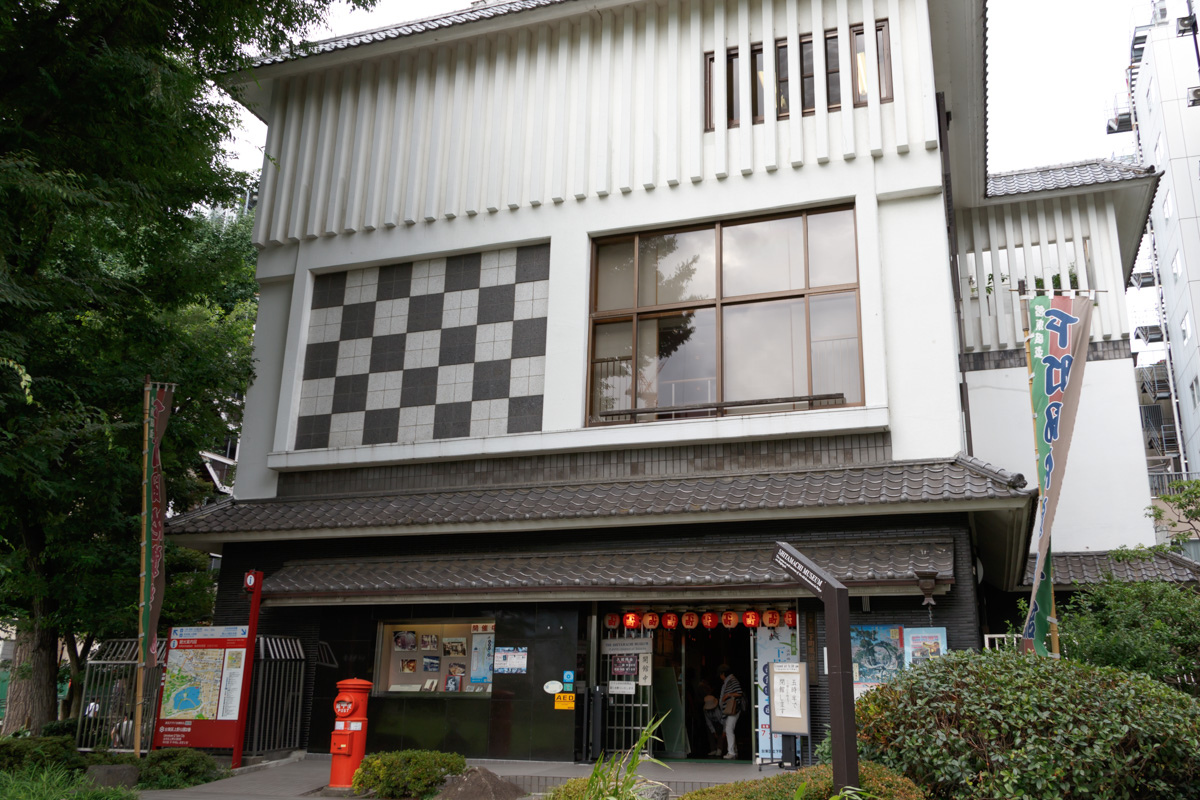
On October 1, 1980, it was opened to tell the culture of old good town being lost to future generations. About 90% of the exhibits in the hall are based on donation items from inside and outside of Taito Ward, which makes it possible to feel the lives of the people of Meiji, Taisho and Showa familiar with the Edo era from the daily items etc. actually used I will.
During the period from 3rd July(Tue) to 2nd September (Sun) in 2018, as the museum hold the event to tell us about the “Living in summer in a downtown” with a theme “Edo’s summer food, clothing and shelter + play “, We visited the museum.
The moment you step in the hall, another world spreads out there.

In the permanent venue of the first floor, the streets of Tokyo and downtown Taisho era have been elaborately reproduced and caught by the illusion as if time slipped.
Especially with commitment The period setting before the Kanto Great Earthquake is because the earthquake severely damaged the scenery so far.
It was built with the desire to convey to the future generations the cityscape that can feel the taste of Edo before the earthquake.
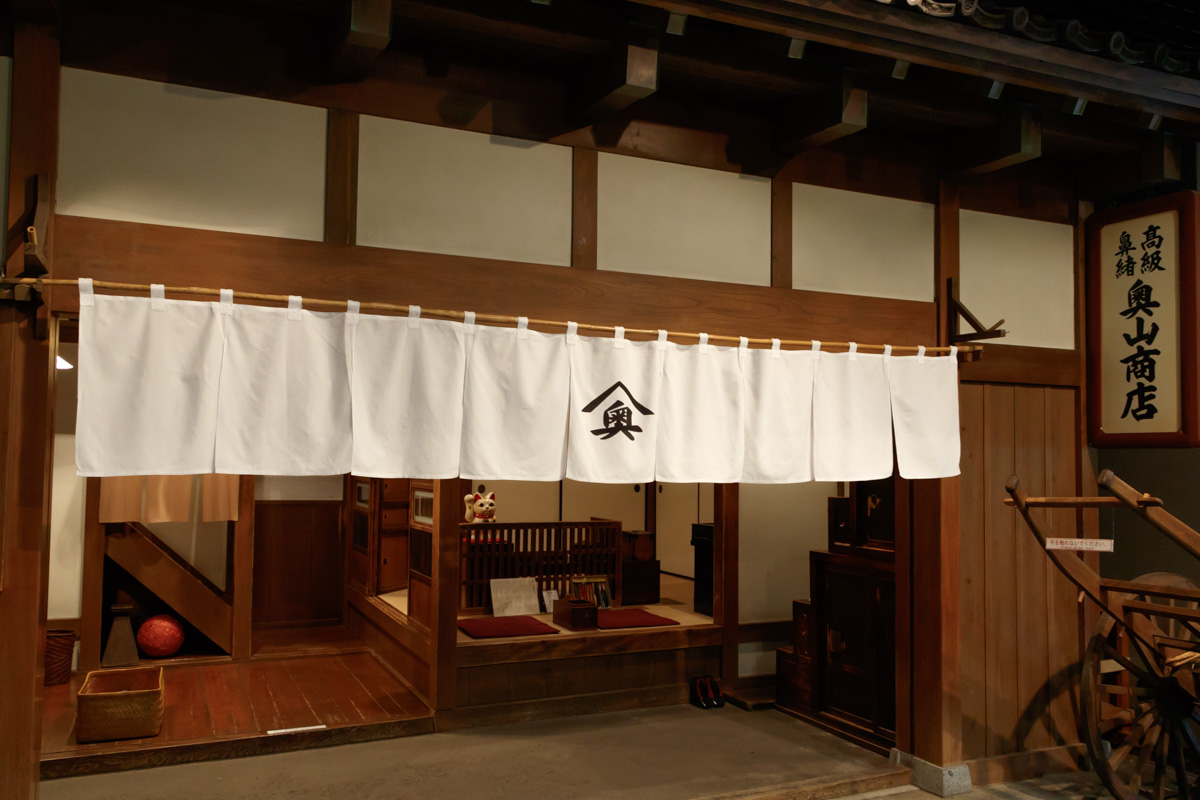

The greatest feature of this museum is not only that it can actually go up to such a reproduction house, but also to be able to touch its furnishings. Please take it and feel the life at the time.
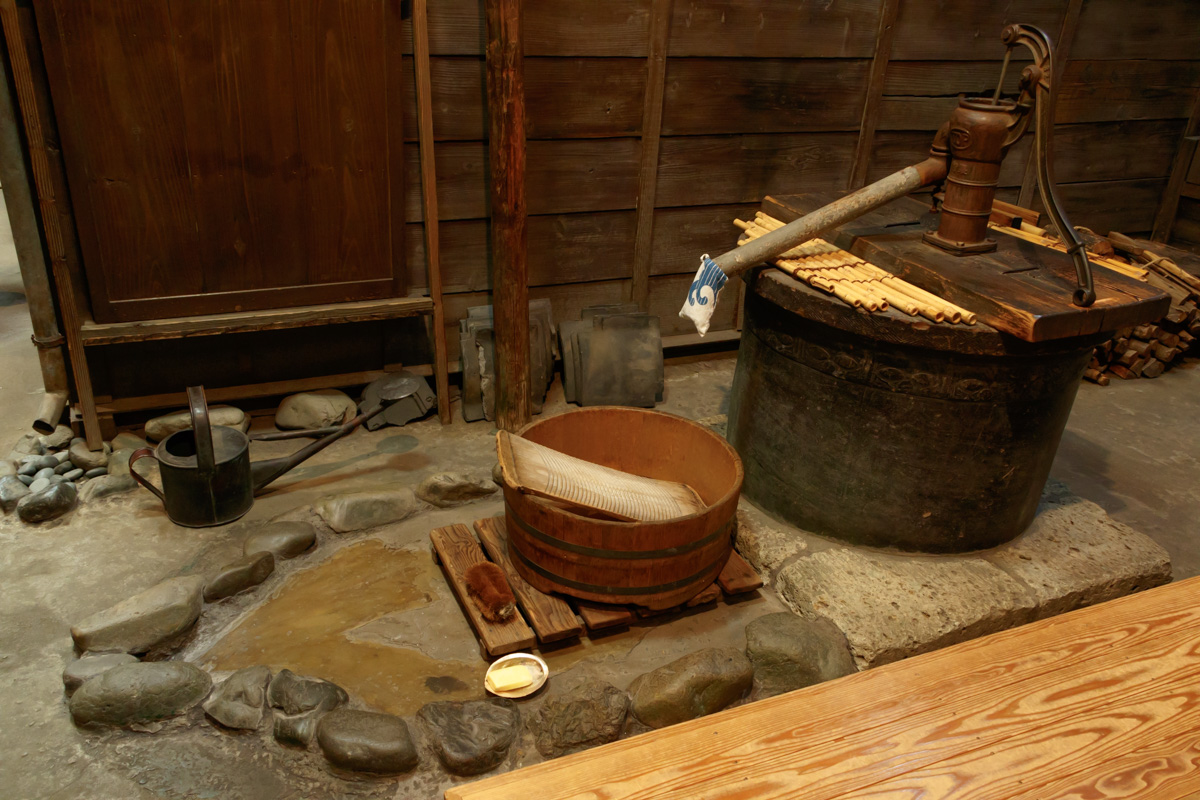
"Well end meeting" was a place of important communication for housewife of those days.
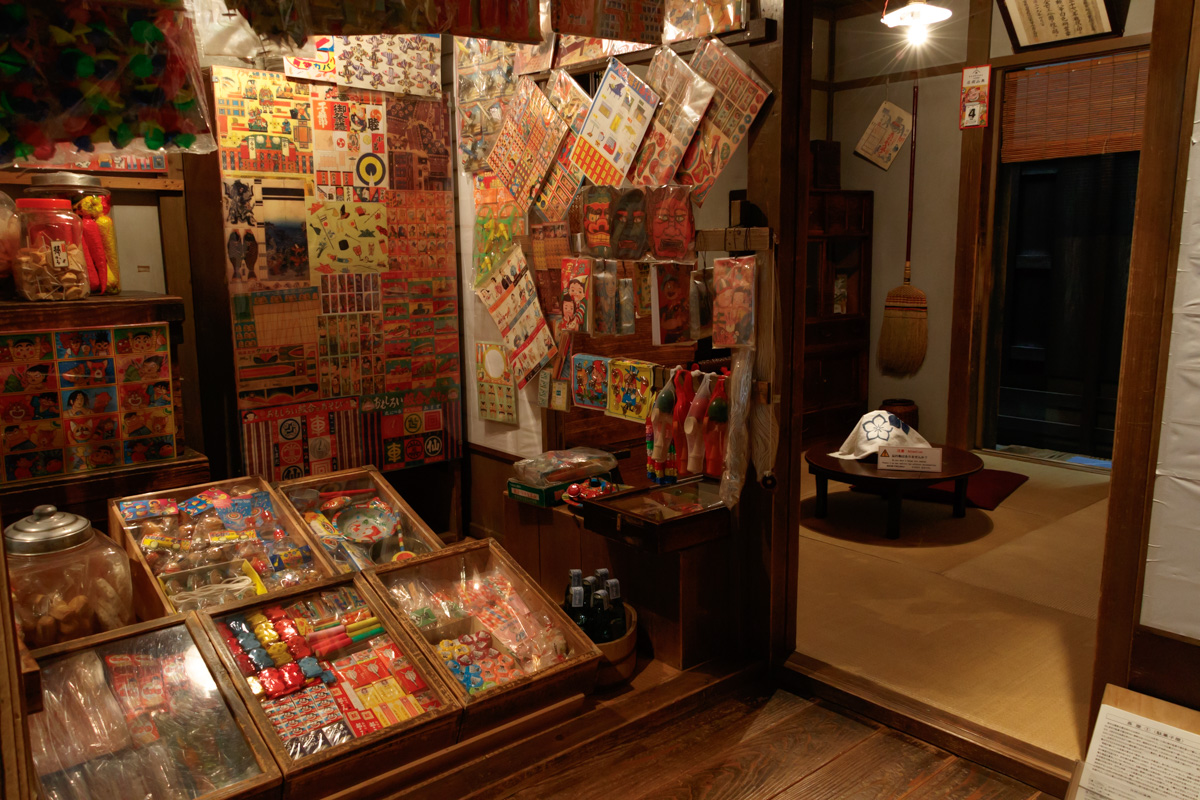
Meanwhile, a cheap sweet shop, which is a social gathering place for children.
Immediately behind you, the room is connected, but you can see the way you live while you run a store at home.
What surprised me is that people's settings of residents are also done.
As I can go up to the cabin and look into the chest drawer, I can see what kind of person is from clothing.

Exhibits will change according to the season at stores.
Shaked ice for the current time. It used to be flattening icy officials in the past.
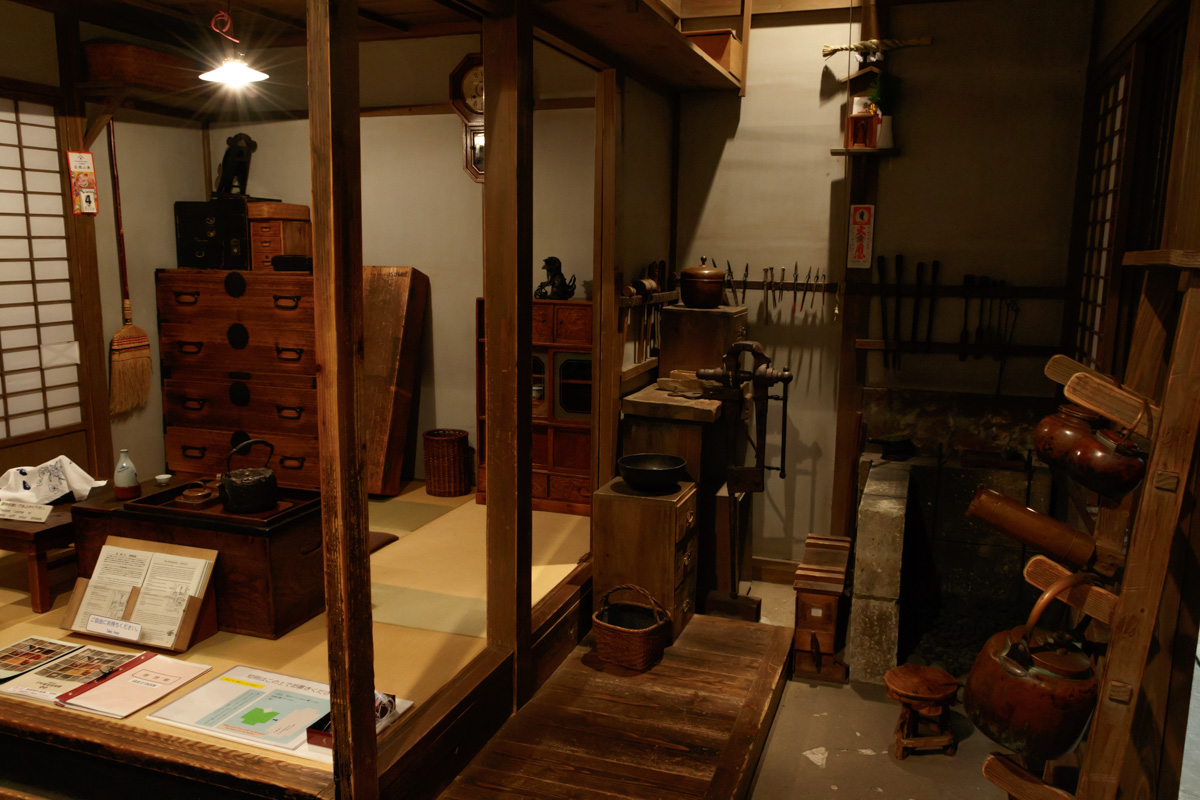
Then, the exhibition “Edo’s summer food, clothing and shelter + play ” held at the 2nd floor.
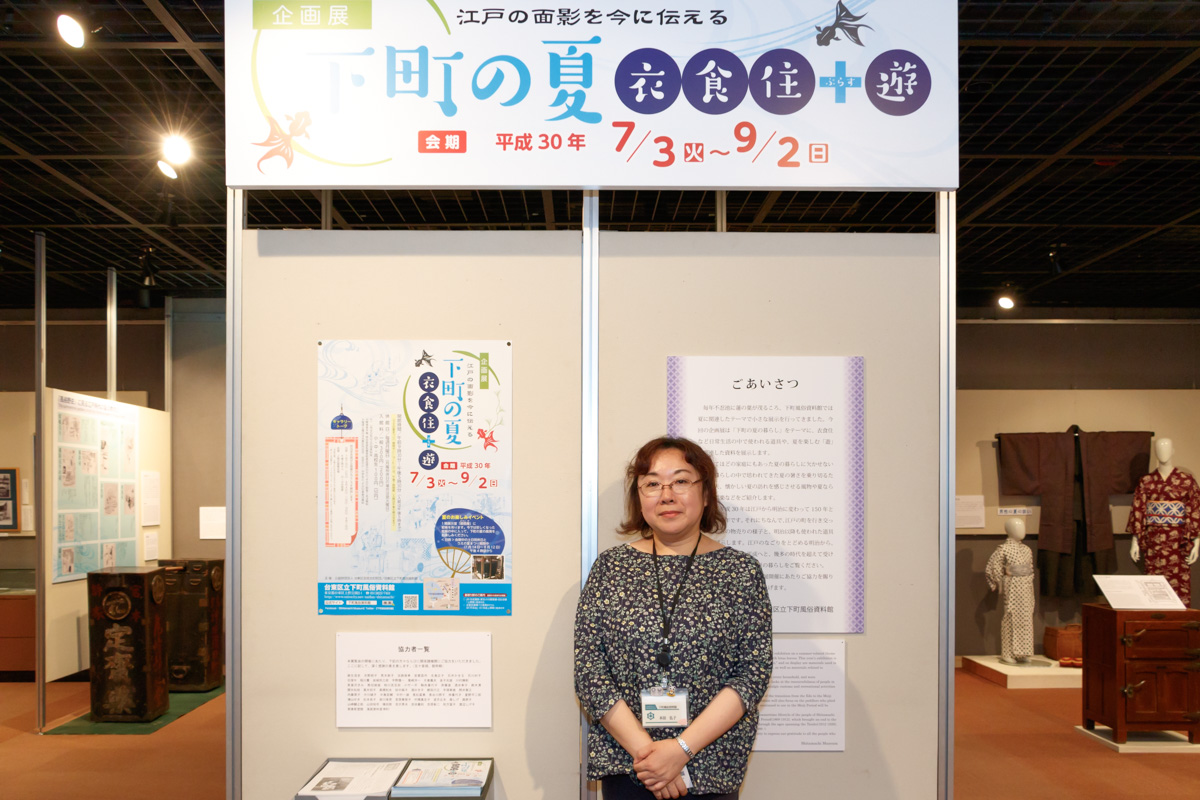
Tools related to everyday life such as clothing, food and living, and materials related to play to enjoy summer are displayed on the theme of “Summer Living in Downtown”.
Let's take a peek into the lives of the people living in the Taisho, Showa, and Heisei downtown from the Meiji era which keeps the remnant of Edo.
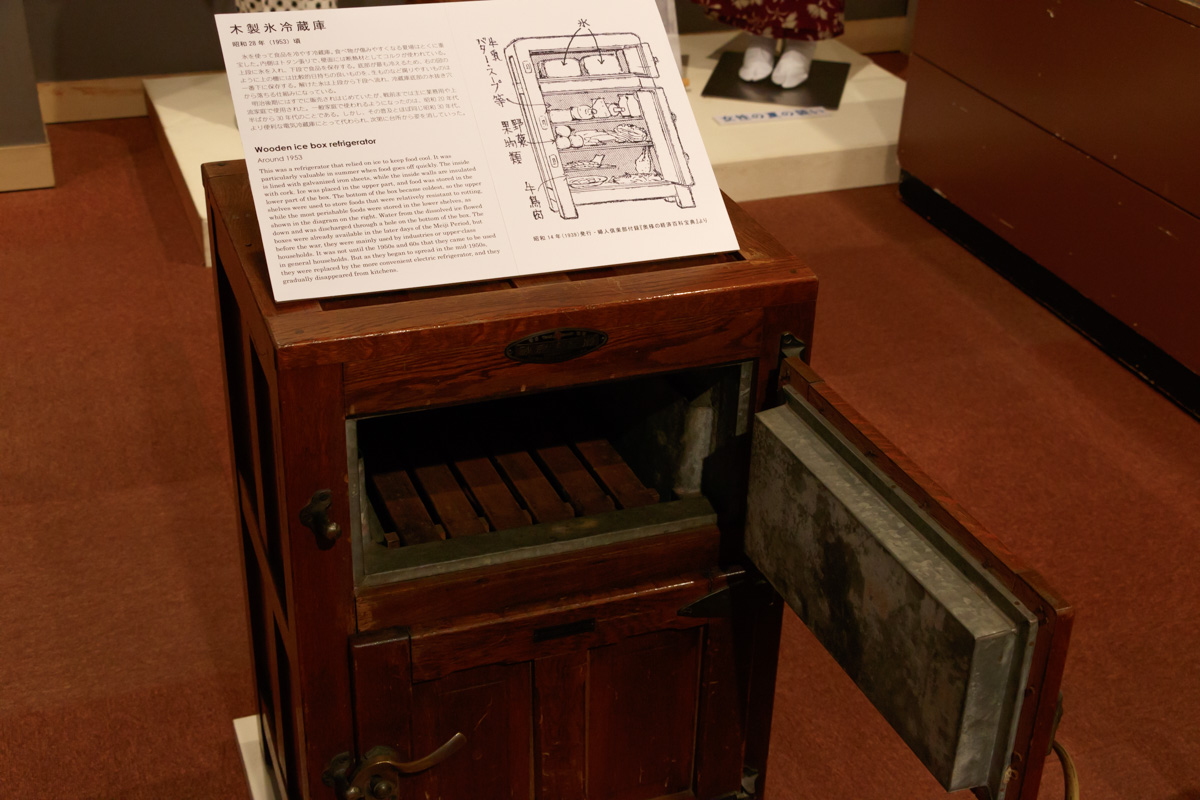

Especially eye-catching was the mosquito net hanging in the center of the exhibition hall.
It was generally used until about the end of the Showa 30 's. Since hemp and cotton used for weaving mosquito nets have the function of escaping the muffled heat, the interior is felt cool.
In the era when there was no air conditioner, people tried to incorporate coolness from the ears from the eyes. Wind chimes is a summer tradition that is also transmitted to the present age, but in addition to that, directing light bulbs from incandescent lamps to blue to produce coolness.
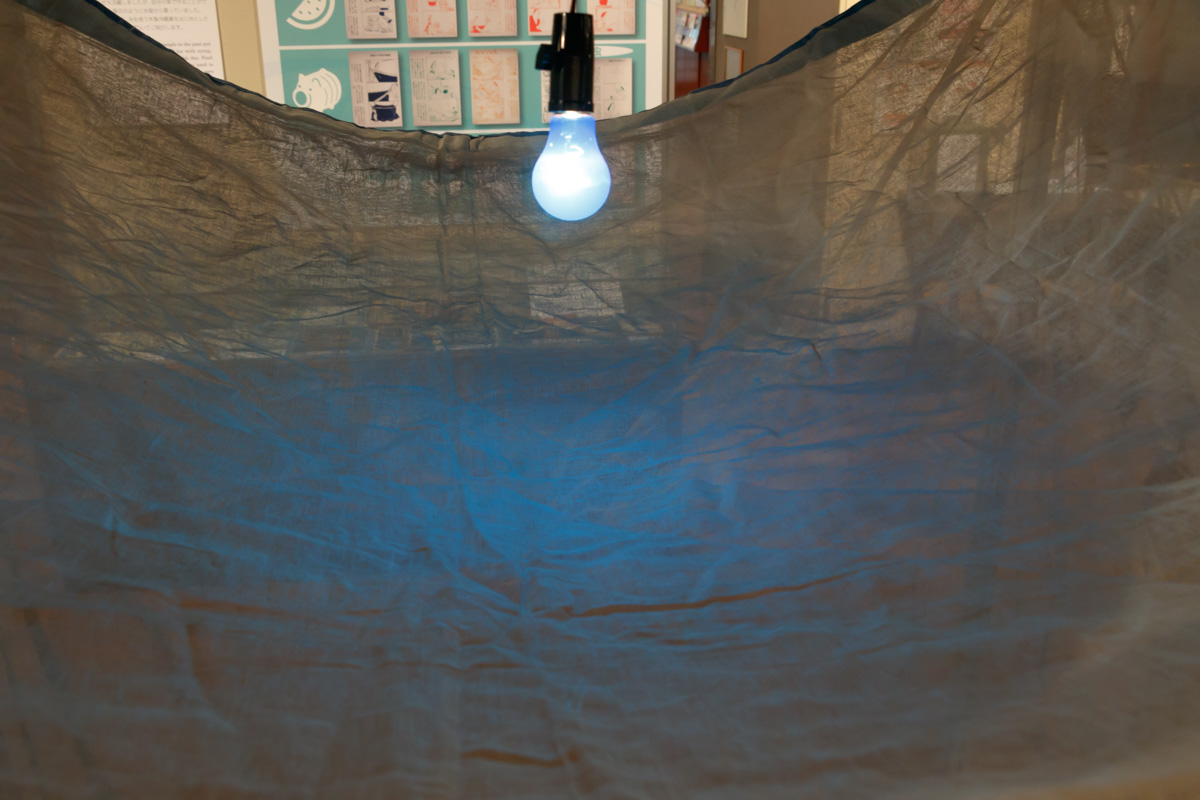


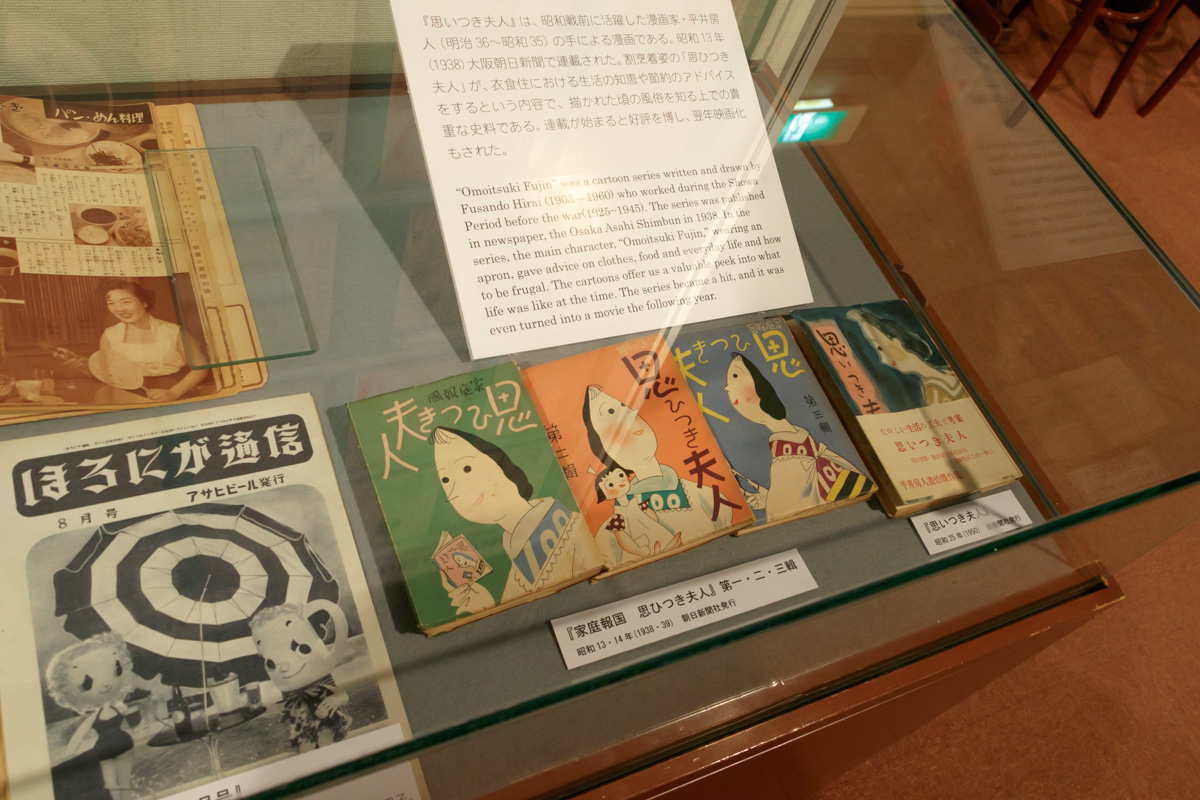

Also, “monouri” which was thriving in Edo is taken up. A monouri is a merchant who sells goods while carrying it. Products sold were essential items such as foods, clothing, miscellaneous goods, medicines, etc. The items sold by time and season changed.
The merchant shouting the good’s name on the street. And with this voice, the residents learned about the change of the season.
While the era will change from Edo to Meiji, the items to be treated will gradually change, but one of the ones that were handed over from Edo as it is “Jyosai-ya”. It was a merchant who sold medicines for a suffering from summer heat and the box he was carrying was called a “Jyosai-bako”.
Every time a Jyosai-ya waiks, metal fittings attached to the box make a sound like a clatter, so this sound is a signal that the merchant came. In addition, the Jyosai-ya without wearing a shade under the scorching sun, this meant that he appealed the efficacy of the medicine with his own body.
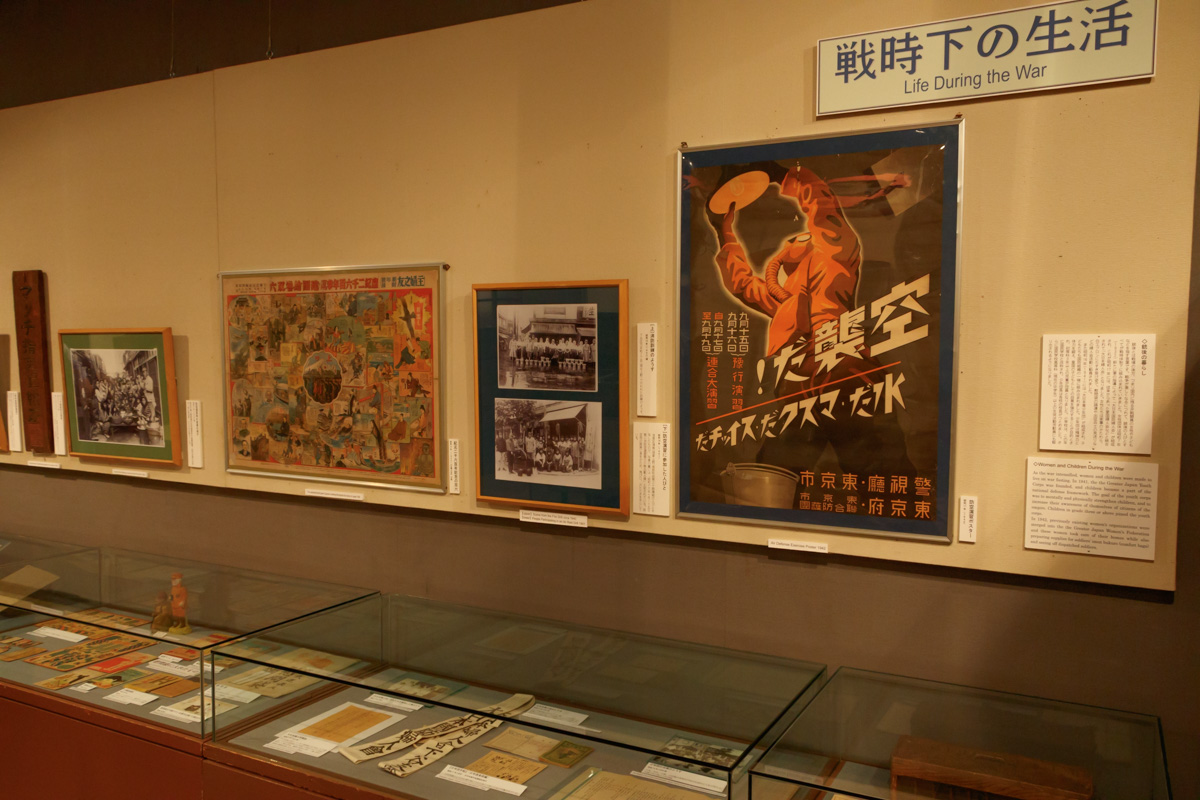
"Life under wartime" permanently exhibited on the second floor. You can see the lives of the people of downtown at that time from postcards and circulation materials of the time. Those postcards handled by Mr. Junichi Nakahara known for girl painting.
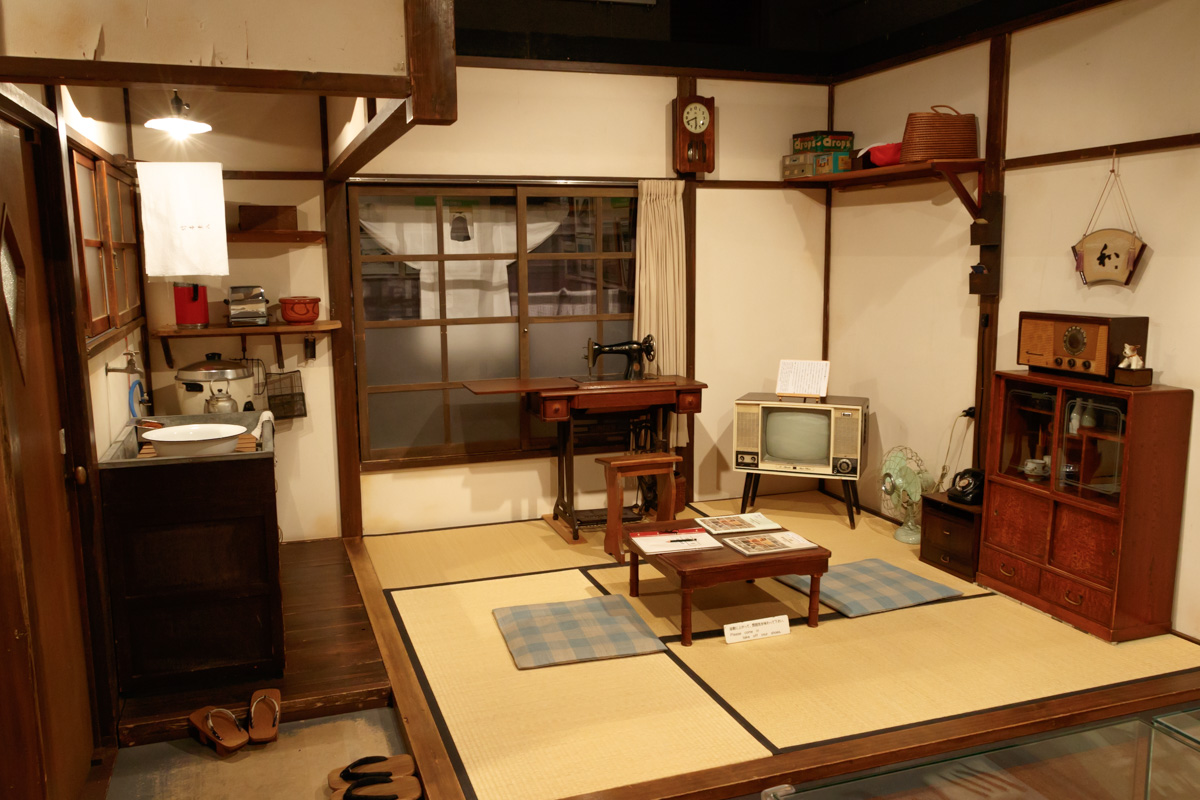
It reproduced the room around the 1950s. You can go up to the room and enjoy the atmosphere.
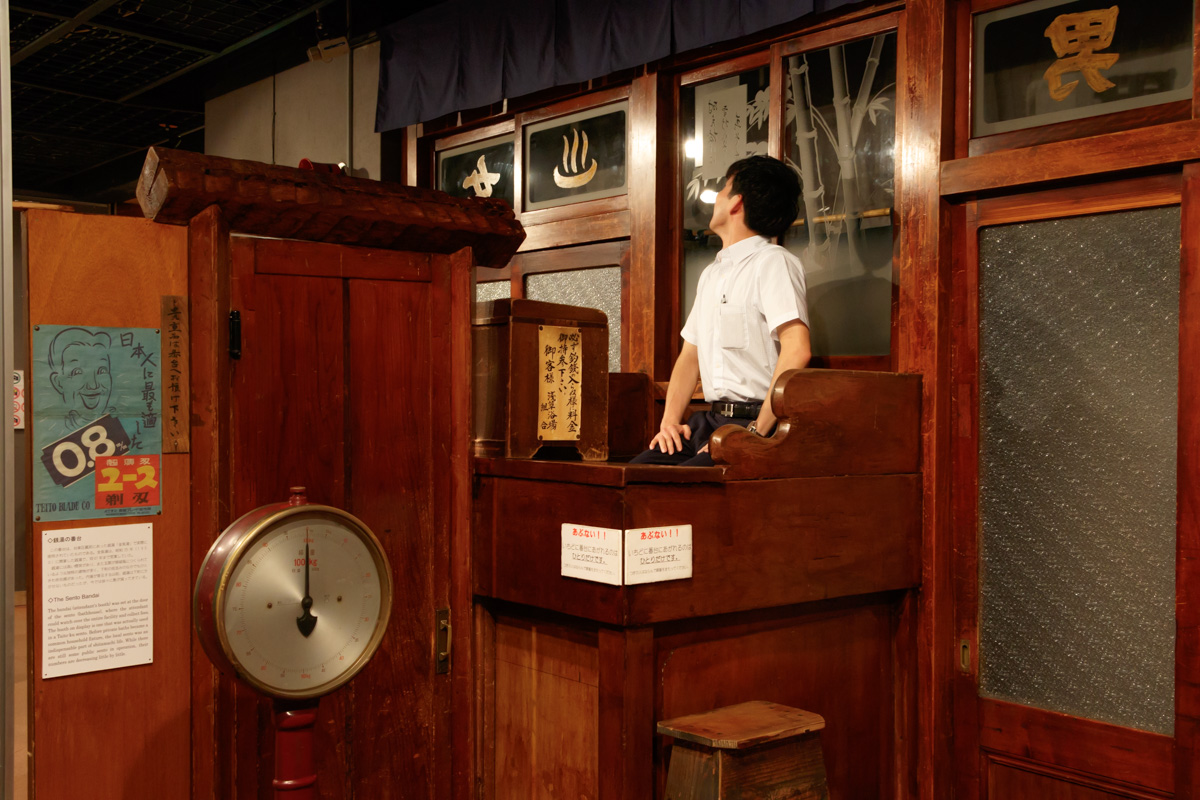
The series which was used in the public bath in Taito Ward has been relocated as it is. You can enjoy the scenery from the series.
Although the exhibited items are valuable materials that convey history, they can be touched in practice, so it was a valuable opportunity to feel the breath of the people of those days.
During the period, mosquito nets are suspended in the copper pot builder on the first floor, and there are also events that can actually enter, so please feel and experience the summer scenery that has been lost now.
※ This event will be held between Saturdays, Sundays, and holidays during the period and during the Ueno Summer Festival (July 14 – August 12) from around 4 pm
Summary
| A session | July 3 (Tue) – September 2 (Sun) of 2018 |
|---|---|
| location | Shitamachi Museum at Taito Ward (2-1 Ueno Park, Taito-ku) |
| Opening hours | 9: 30 am – 5: 30 pm (Admission is until 5 o’clock) |
| closing day | Monday (Next weekday if Monday is a holiday) |
| Admission fee | General 300 yen (200 yen) Small, medium, high school students 100 yen (50 yen) * In parentheses, group fee of 20 people or more ※ Persons who have a handicapped Person with disability or medical care beneficiary certificate for medical treatment for the disabled and their carers are free (proof of necessity at entry) ※ Every Saturday, small and junior high school students living and staying in Taito-ku and their leaders are free |
| inquiry | 03-3823-7451 |
| URL | http://www.taitocity.net/zaidan/shitamachi/ |
Gallery Talk
There is a commentary on the highlight of this exhibition by the curator in charge.
Date and time Saturday, July 7th, Saturday 21st Saturday August 4th Saturday 11th Saturday 18th Saturday September 1 Saturday 2pm
From about 20 to 30 minutes
2nd floor planning exhibition hall
※ No reservation required. Everyone who entered can participate.
※ For details please visit the Shimomachi Museum official website http://www.taitocity.net/zaidan/shitamachi/ · facebook 【Shitamachi Museum】 · Twitter 【Shitamachi Museum】or confirm with the telephone.
